It’s easy to cook perfect jasmine rice on the stovetop. These three simple methods don’t require a precise rice water ratio and work like a charm every single time. A video tutorial included.
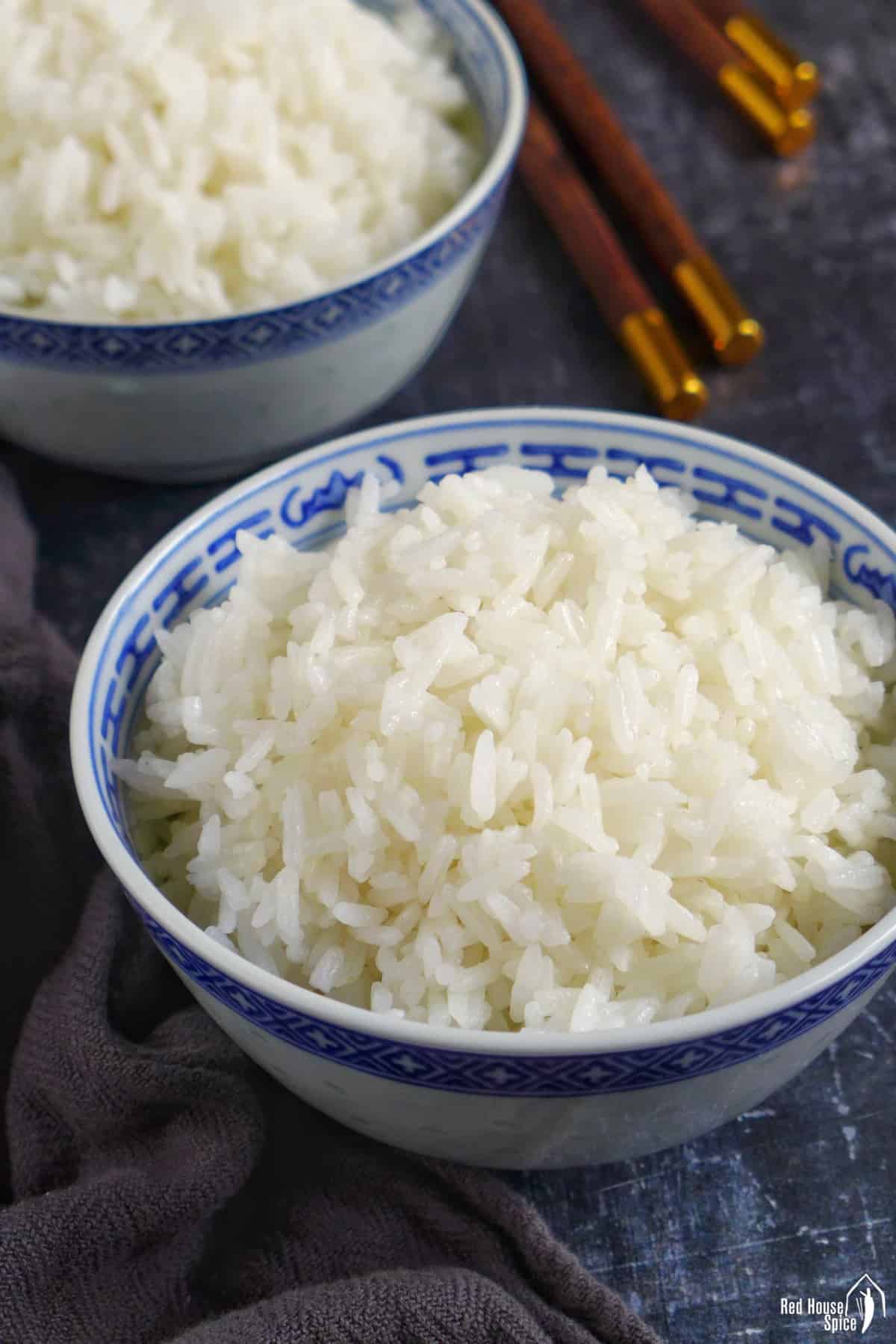
Have you heard people say that “every Chinese/Asian household owns a rice cooker”? Well, I think I’m an exception despite being born and raised in China. Having been cooking rice on the stovetop almost every other day for 15 years, I’m very happy to share three easy ways to cook jasmine rice: in a saucepan, in a strainer, or in a steamer.
Why do I love these methods? Here are two simple reasons: 1. No precise rice water ratio is required so you don’t have to measure with a cup. 2. Soft or al dente, the texture can be easily adjusted.
What is jasmine rice?
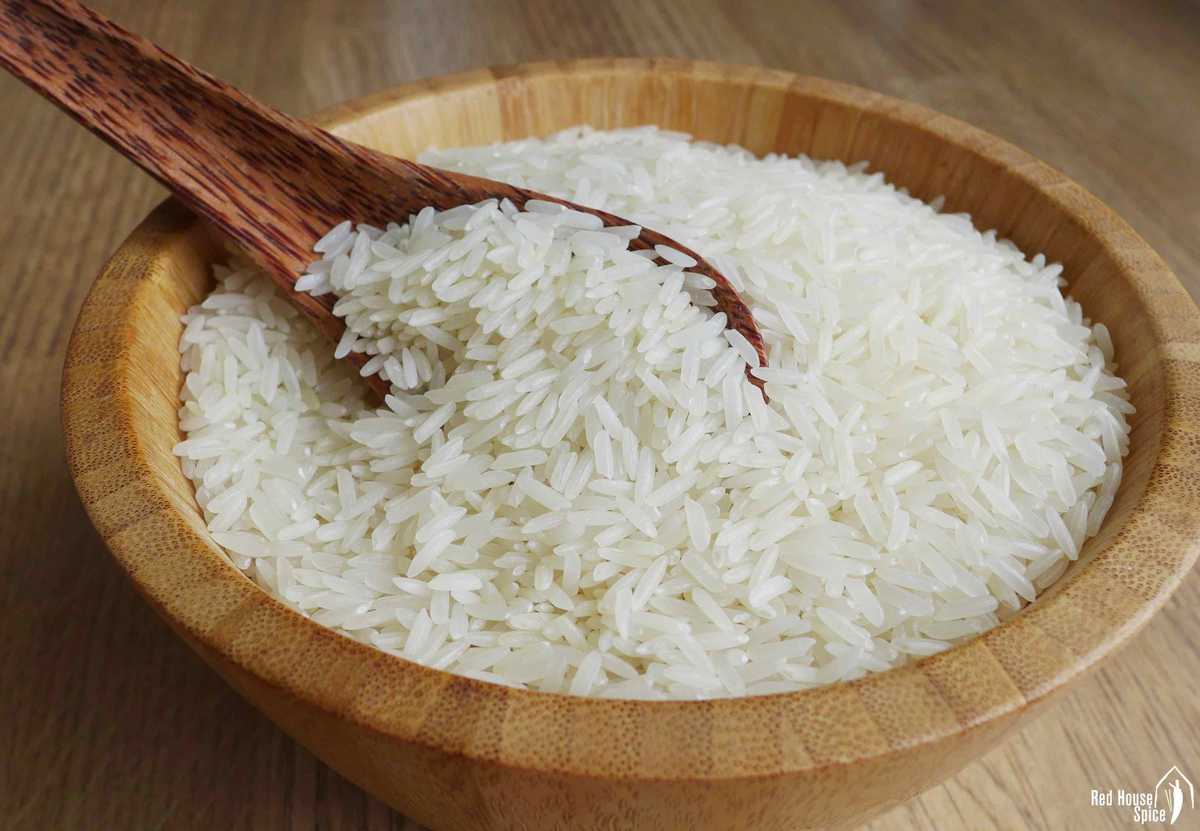
Although growing up in Northern China where wheat-based staples (noodles, dumplings or buns) are dominant, my family always had the majority of meals accompanied by steamed rice. In the 1990s, my parents switched from Chinese short-grain rice to jasmine rice, which has a Southeast Asian origin, as we prefer its texture and flavour.
A type of long-grain white rice, jasmine rice has a subtle floral aroma. When cooked, its texture is somewhere between short grain and basmati rice: light, fluffy with a little stickiness.
To cook, you only need water. Salt, spices, etc. can be added, but plain rice is preferred if you wish to create an authentic Chinese meal.
Like all types of rice, jasmine rice absorbs water and expands during cooking. Every 1 cup of raw rice (220g/8oz) produces about 3 cups of cooked rice.
How much jasmine rice makes a portion for one person? It depends! I usually cook 1½ cups (330g/12oz) of raw rice for 4 adults with a moderate appetite. But your preferred size might be quite different.
Do you need to rinse the rice?
Before I explain further, the short answer is: It’s entirely up to you.

When I was young, rinsing rice was an unmissable ritual for my parents as this would remove any impurities. Then rice with no-rinse labels became widely available in China. Modern, mass-produced rice is processed before being bagged up thus debris and some surface starch are removed.
If your rice is purchased in sealed bags and there aren’t any specific instructions about rinsing on the package, it’s perfectly fine not to wash it. However, old habits die hard, and if like me, you prefer rinsing your rice, then go ahead. This process doesn’t really change the end result noticeably.
There is one thing I need to remind you though. Jasmine rice doesn’t need to be soaked before cooking. In fact, soaked rice could lead to a gummier texture.
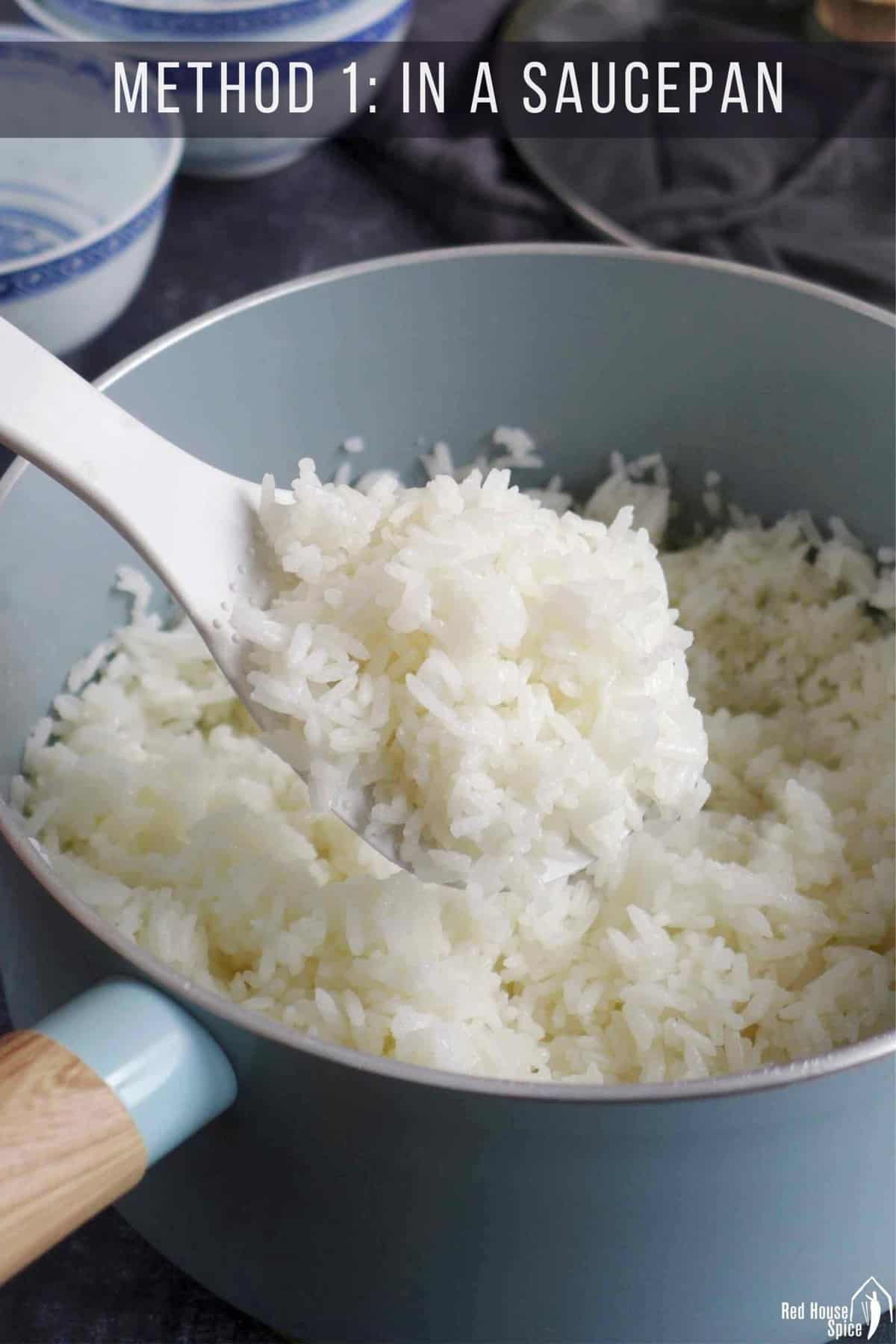
Method 1: Cook in a saucepan
This is my everyday method to cook jasmine rice. It produces the perfect texture for serving as a staple with savoury dishes: soft but not mushy, a little sticky so that you can easily pick it up with chopsticks.
EQUIPMENT: What you need is simply a saucepan (or a pot for a larger quantity) that comes with a well-fitting lid. For a better result, choose one with a thick bottom. Also, make sure you have a timer to hand.
STEP 1: Put the rice in the saucepan then pour in cold water until it’s about 2 cm/ ¾ inch above the rice. It doesn’t have to be scientifically precise. Like many Chinese home cooks, my parents taught me to measure with a finger.
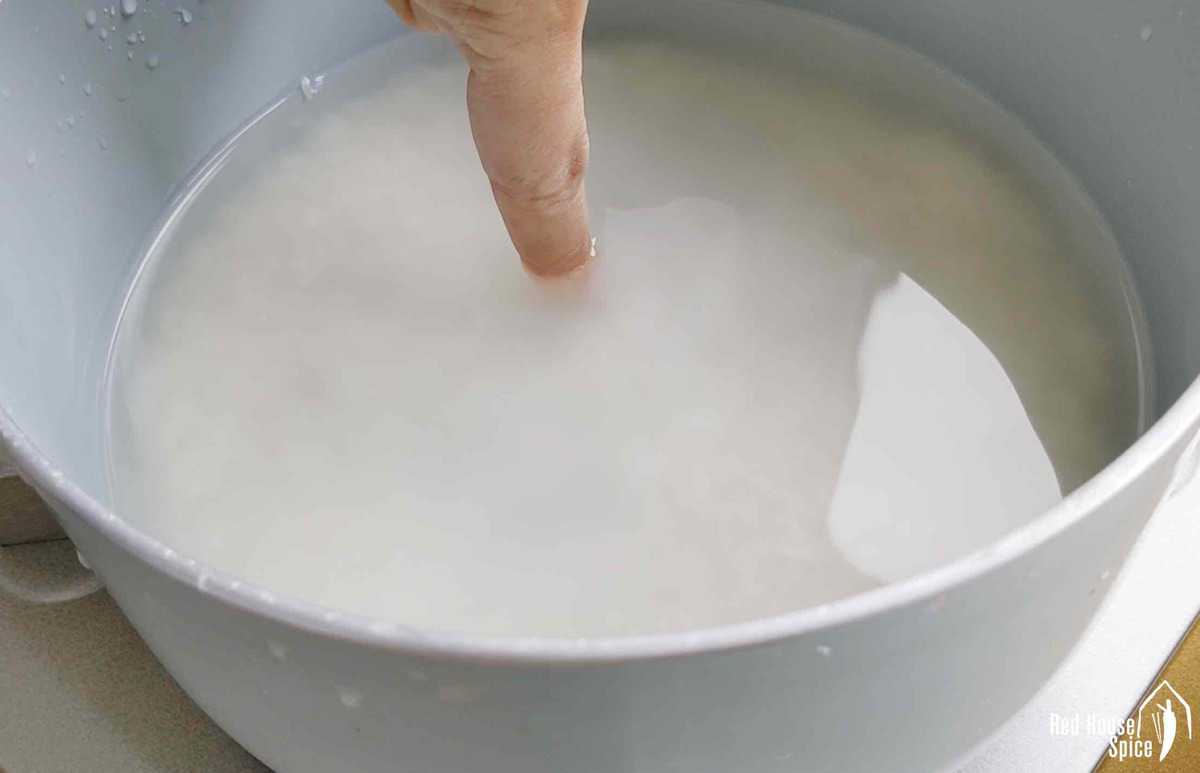
Here is how: Put your index finger vertically into the water until the fingertip just touches the rice. The water should be up to the first knuckle. Add more or pour out a little to adjust.
No matter how much rice you’re cooking and how long/short your finger is, this method works as the amount of water the rice can absorb in the next step is more or less fixed.
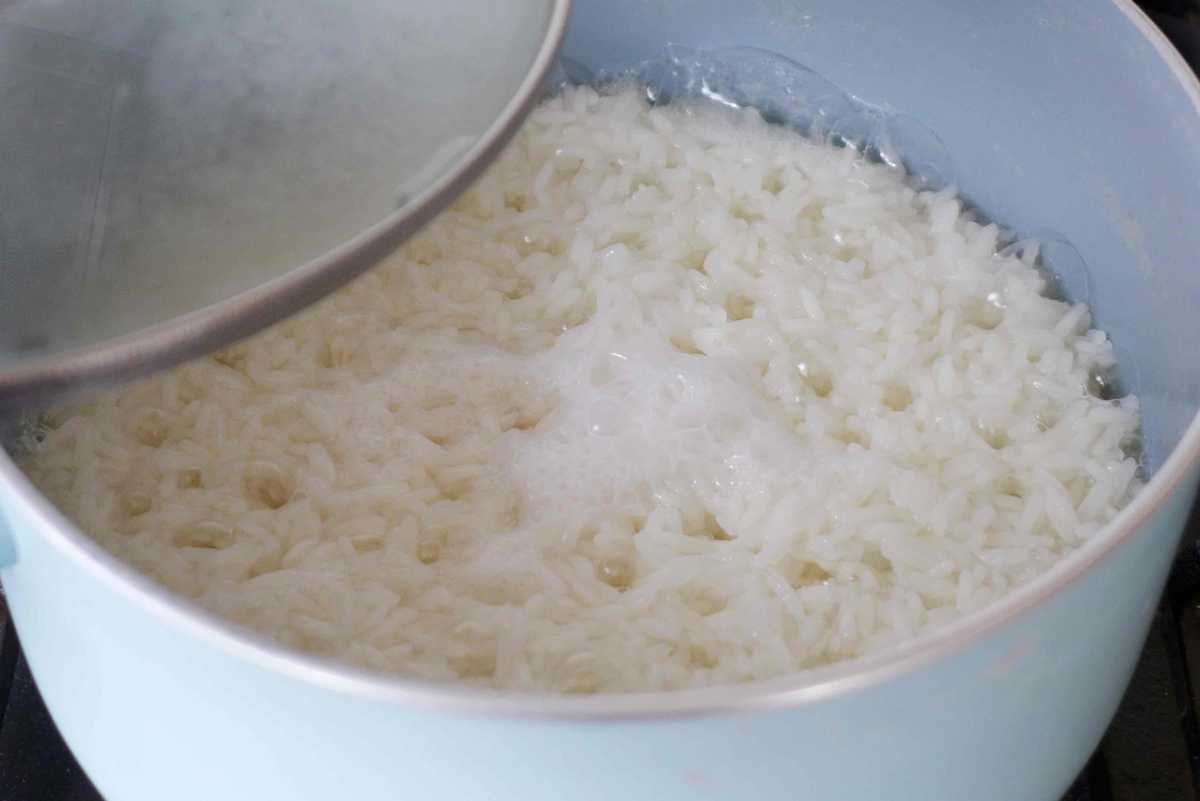
STEP 2: Over medium heat, boil UNCOVERED until the water reduces to the rice level. At this moment, you’d see many holes in the rice with bubbles coming out (see image above).
STEP 3: Cover with a lid and turn the heat to the lowest. Set the timer to 10 minutes and leave to steam. When the time is up, remove the saucepan from the heat. Allow to sit for a further 5 minutes. Remember not to open the lid. Before serving, use a rice paddle to fluff it up.
🛎 ADJUST: If you’d like your rice on the firm/dry side, extend the steaming time in step three to 12 minutes (instead of 10).
**Please note that depending on the quality of your cookware and the heat power, you may need to slightly adjust the cooking time so that the rice matches your preferred texture. Test and adjust if necessary.
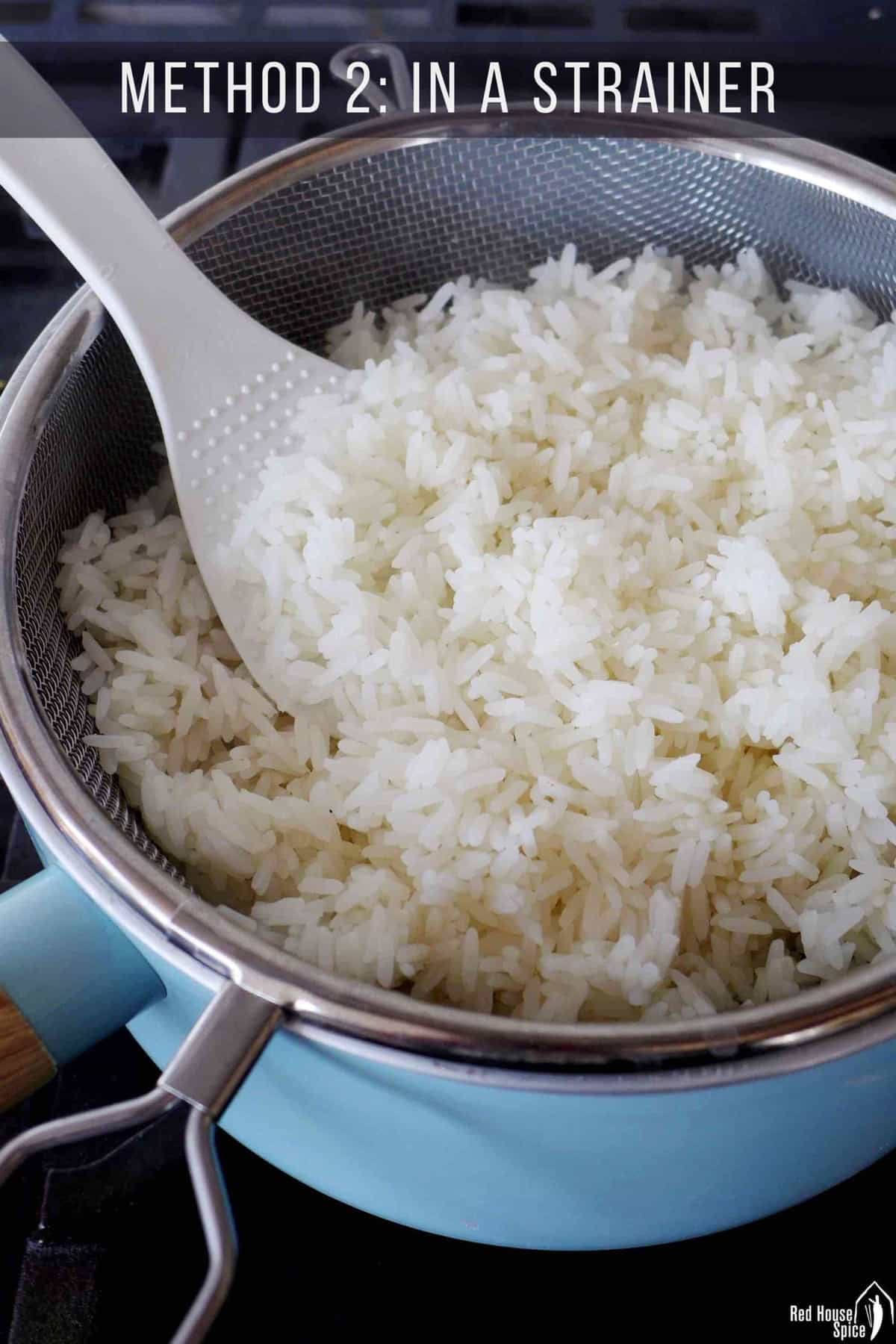
Method 2: Cook in a strainer
This is a less common way to cook jasmine rice. I like it for two reasons: It produces a firm, al dente texture that’s perfect for making Chinese fried rice (it doesn’t clump up); the result is always consistent regardless of the cookware or the performance of the burner.
EQUIPMENT: You’ll need a saucepan and a heatproof fine mesh strainer/colander that can be suspended over the saucepan. A timer is also required.

STEP 1: Bring ample water to a full boil in the saucepan. Put in the rice. Leave to parboil over medium heat for 4 minutes. Drain the rice with the strainer.
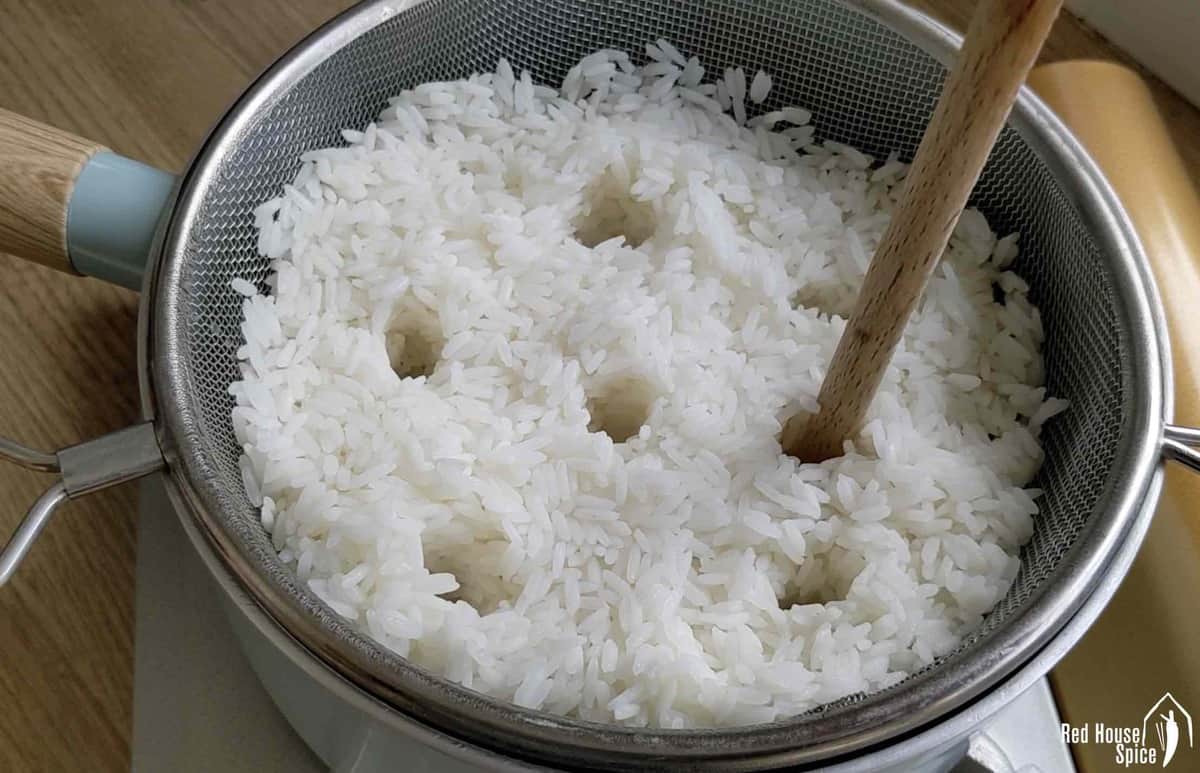
STEP 2: Add fresh water to the empty saucepan and bring it to a boil. Place the strainer over. Make sure the water isn’t so much that it touches the rice, but not so little that it dries out while steaming. Poke a few holes in the rice then cover with a lid. Leave to steam for 10 minutes. Remove from the heat then let it sit for another 5 minutes.
🛎 ADJUST: If you prefer a softer texture, you can either increase the parboil time (in step one) to 5 minutes (instead of 4) or increase the steaming time (in step two) to 12 minutes (instead of 10).
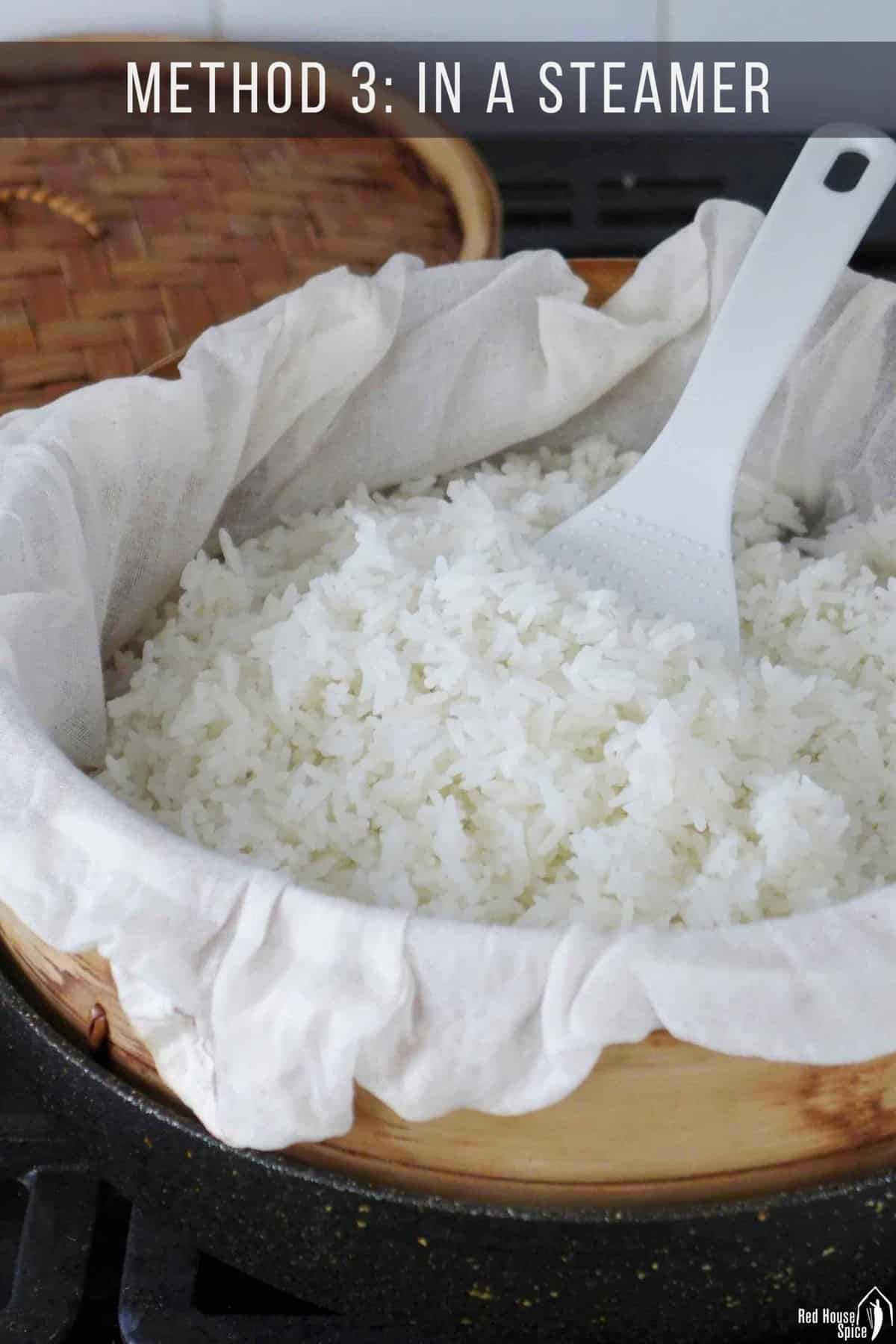
Method 3: Cook in a steamer
The principle and result of this method are exactly the same as the strainer method above. The only difference lies in the tools required.
EQUIPMENT: You’ll need a steamer basket (bamboo, metal or plastic), a piece of muslin cloth (or a clean tea towel) and a wok/pot over which the basket sits.
STEP 1: Bring ample water to a full boil in the wok/pot. Put in the rice. Leave to parboil over medium heat for 4 minutes. Drain the rice.
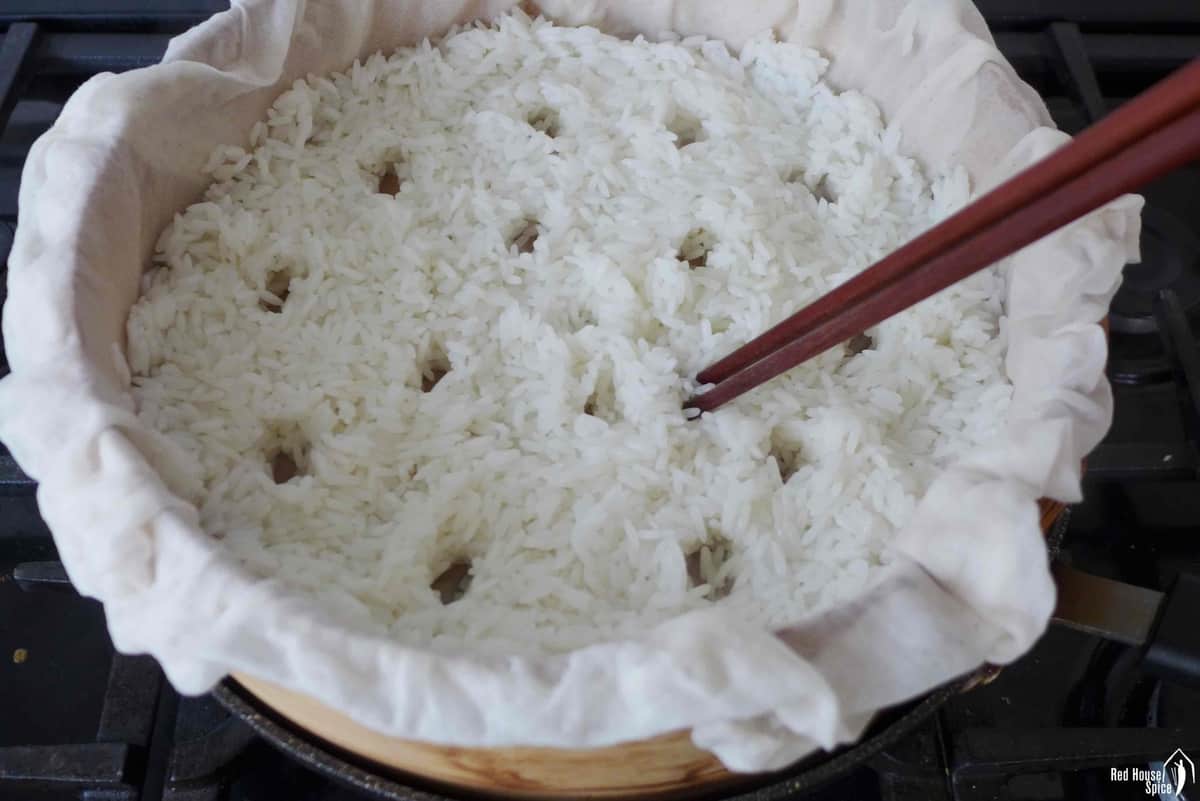
STEP 2: Put the rice into the steamer basket lined with the muslin cloth (make sure to WET it beforehand). Spread the rice to an even thickness and poke some holes. Bring fresh water to a full boil in the wok/pot then place the basket in. Cover with a lid and leave to steam over medium heat for 10 minutes. Turn off the heat. Let it sit for 5 minutes.
🛎 ADJUST: Same as what I’ve explained in the strainer method above.
How to serve
In most cases, Chinese people eat steamed rice (known as Fan/饭) with several savoury dishes (known as Cai/菜). Each diner has a small bowl of rice (Fan). Other dishes (Cai) are served at the same time and placed in the middle of the table for sharing. Fan and Cai are consumed in an alternating way: one mouthful of savoury Cai followed by a morsel of plain Fan.
There is another way to serve jasmine rice. Put it in a plate (or a large bowl) then top with a single savoury dish which often comes with a sauce/thick broth. This is known as Gai Jiao Fan/盖浇饭 (or Gai Fan/盖饭) which literally means “cover and pour rice”.
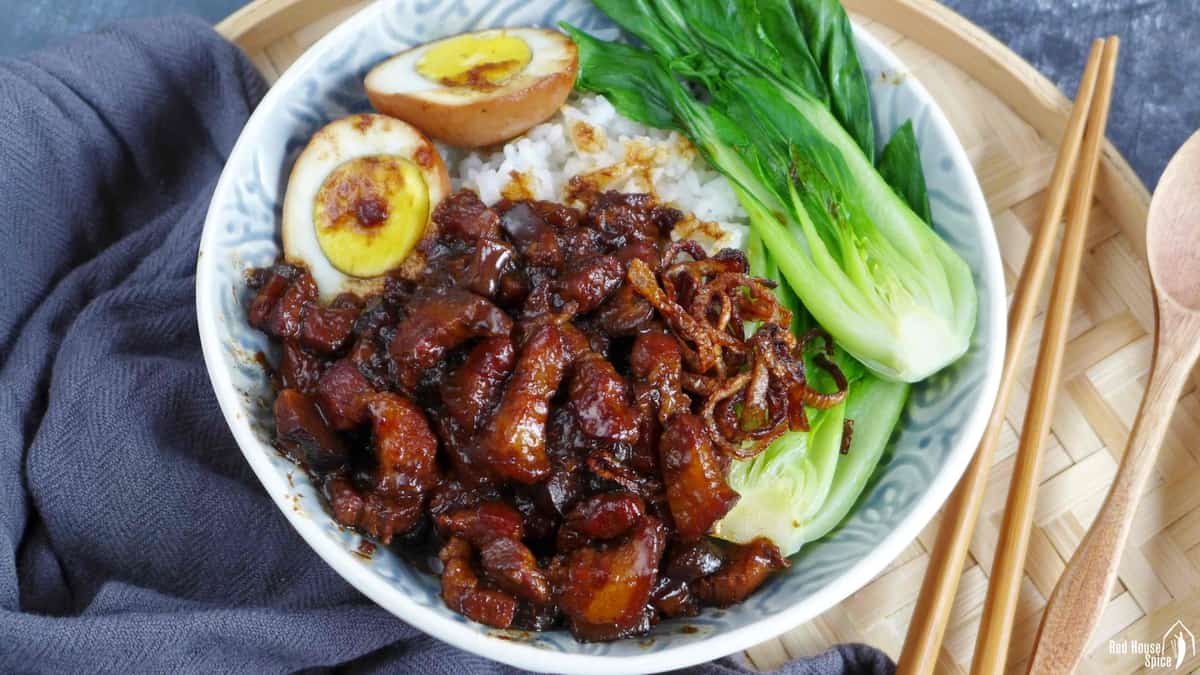
Lu Rou Fan (Taiwanese Pork Rice Bowl, see image above) is a great example. But you can improvise and the pairing choices are endless. For example, top the rice with Black Pepper beef, Tomato & Egg Stir-fry, Mapo Tofu, Garlic Sauce Eggplant, etc.
How to use leftover rice
Jasmine rice tastes best when freshly cooked as its aroma subsides over time. So it’s not recommended to make it in advance. But if you’re planning to cook Chinese style fried rice, refrigerated leftover rice is essential for success.
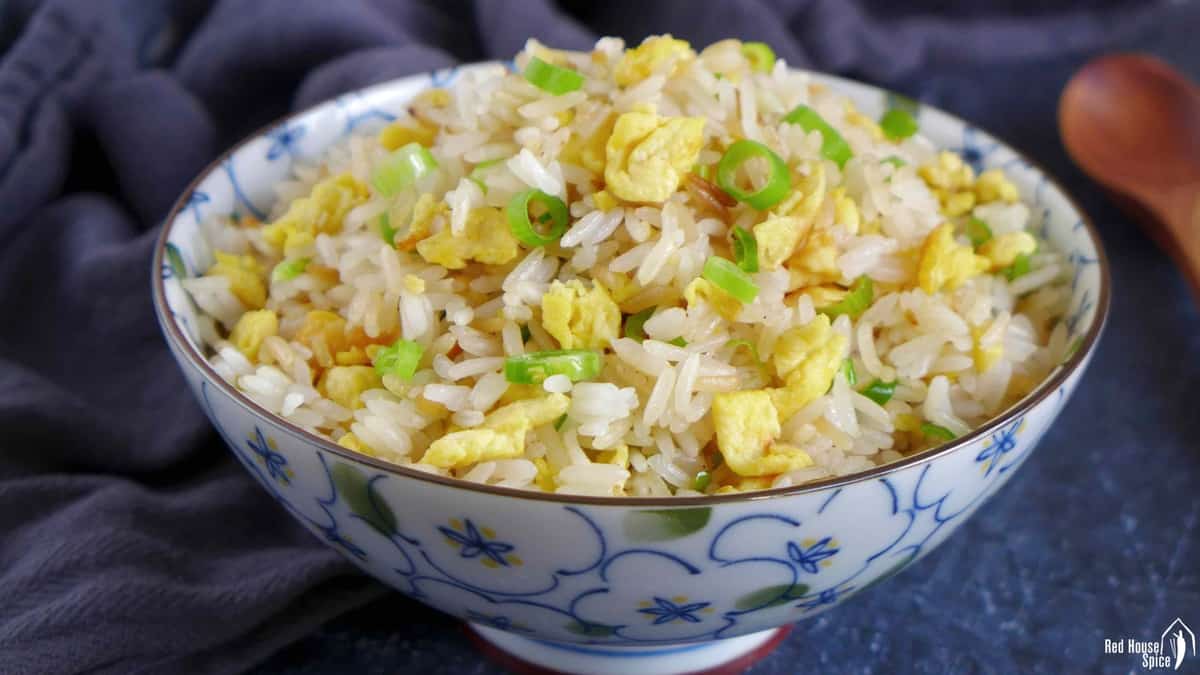
To make top-notch, super fluffy fried rice, it’s best to use the strainer or the steamer method to cook the rice. In this case, refrigeration isn’t compulsory. You can start stir-frying as soon as the cooked rice cools down to room temperature.
Here are some recipes that you might like:
- Egg Fried Rice
- Yangzhou Fried Rice
- Pork Fried Rice
- Soy Sauce Fried Rice
- Chinese Sausage Fried Rice
- Beef and Pineapple Fried Rice
Cooked rice can be stored in the fridge for up to three days, or in the freezer for three months. If the latter, make sure you keep it in an airtight container to avoid drying out. Defrost in the fridge then use it to cook delicious fried rice.
📋 Recipe
Love this recipe? Please leave a 5-star 🌟🌟🌟🌟🌟 rating in the recipe card below & if you REALLY like it, consider leaving a comment as well!
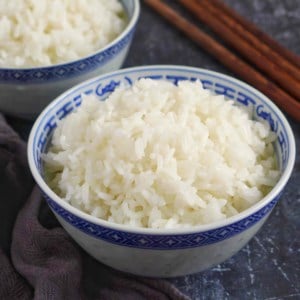
Cook Jasmine Rice On the Stove, Three Ways
BEFORE YOU START
Ingredients
- 1½ cup jasmine rice - 330g/12oz (makes about 4 servings)
- Water - no precise measurement required
Instructions
- Rinse the rice under running water if you wish, but this step isn’t compulsory (see note 1).
Cooking Method 1: In a saucepan
- Put the rice into a saucepan, preferably one with a thick bottom (Use a pot if making a large quantity). Pour in cold water until it’s about 2 cm/ ¾ inch above the rice. This doesn’t need to be precise. See note 2 for a simple way to judge.
- Turn on the stove. Cook the rice UNCOVERED over medium heat until the water reduces to be level with the rice (you’d also see some holes in the rice).
- Turn down the heat to the lowest and immediately cover the pot with a well-fitting lid. Set a timer to 10 minutes and leave to cook (see note 3).
- When the time is up, remove the saucepan from the stove. Leave to sit for a further 5 minutes (Do not open the lid).
Cooking Method 2: In a strainer
- In a saucepan, bring ample water to a full boil then add the rice. Parboil over medium heat for 4 minutes. Then drain it in a heatproof fine mesh strainer.
- Add fresh water to the empty saucepan, bring it to a boil. Place in the strainer with the rice in it. Make sure the strainer is suspended over the saucepan and the water below doesn’t touch the rice (but not so little that it would dry out while steaming).
- Poke a few holes in the rice then cover with a lid. Leave to steam for 10 minutes. Remove from the heat and let it sit for a further 5 minutes.
Cooking Method 3: In a steamer
- In a wok/pot, bring ample water to a full boil then add the rice. Parboil over medium heat for 4 minutes. Then drain well.
- Put the rice into a steamer basket lined with a WET muslin cloth (or clean tea towel). Spread the rice to an even thickness and poke some holes.
- Add fresh water to the empty wok/pot. Bring it to a full boil then place the basket over. Cover with a lid and leave to steam over medium heat for 10 minutes. Turn off the heat. Let it sit (covered) for another 5 minutes.
Video
NOTES
NUTRITION
NUTRITION DISCLOSURE: Nutritional information on this website is provided as a courtesy to readers. It should be considered estimates. Please use your own brand nutritional values or your preferred nutrition calculator to double check against our estimates.


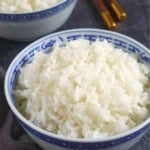
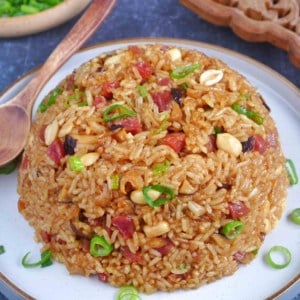
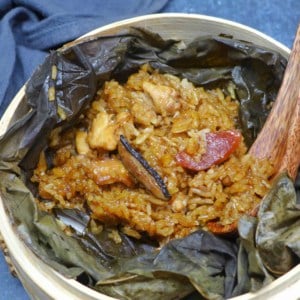


I love the 1st knuckle measurement for the water level, works every time, and, like you said, it works for any volume of rice you want to make.
We have to trust our ancestors’ wisdom, right? Glad you find it helpful.
I have used this stove-top method several times now and it has worked perfectly, as long as I pay attention to when the water has cooked down level with the rice. I would like to try cooking brown jasmine rice this way. Anyone have suggestions?
Glad you enjoy my recipe Susie! I haven’t cooked brown rice but as far as I know, you’d need more water and cook it a little longer.
Well, that was easy. I was dubious at first to use the “first knuckle” gauging enough water method, but I knew you had way more experience than me…so I gave it a try
Absolutely PERFECT sticky rice. And I mean PERFECT.
Your instructions are spot on.
I will always make my rice this way in the future.
Very happy to hear you like my recipe!
Thank you for teaching me to make perfect rice without a rice cooker! 😊 I didn’t want one more appliance in my kitchen that was only used on occasion. I now make perfect sticky rice every time. Why aren’t these the instructions on the package?
Thanks again, I look forward to trying ore if your recipes.
I agree with you. There is no need to have another appliance just for making rice. Glad you find my recipe helpful.
I used the stovetop, and it turned out perfect. Can this method be used for calrose rice?
I haven’t tried calrose rice but I think it will work well as it’s also white rice.
I’ll try and let you know. Thanks!
This recipe is so easy to make jasmine rice on the stovetop.
Highly recommend and love it!
Thank you very much for posting this! I am a good home cook but I’ve never been able to cook rice well. Your instructions for cooking the rice on the stove top worked perfectly.
Hello,
Firstly, I love your recipes as they make the process so much less intimidating since I am learning to Chinese dishes solely from your blog and notes!
For the stove-stop method, my rice came out very mushy and clumpy. I know I will need to experiment more on how to get the right temperature, but i wanted to know if you had any idea of what part of the process is more likely to cause this.
It’s possible that you didn’t boil down the water enough before you cover and simmer the rice over low heat. Also you can try adding a little less water from the start. Hope this helps.